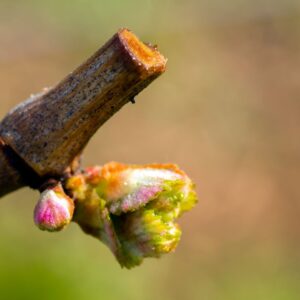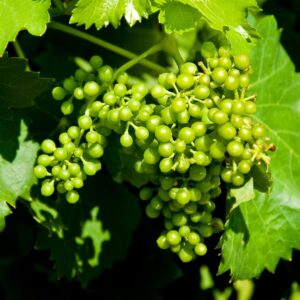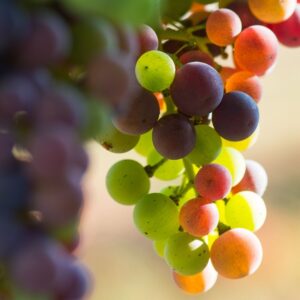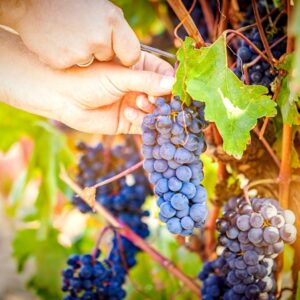The Life of a Vine
As we celebrate 50 years here at Prospero Grapes, we felt it was only right to take a look at the life of a grapevine. After all, they’re the core of our business—and we couldn’t make wine or have accomplished what we have without them! Here’s a quick overview of the stages grapes go through, from bud break to dormancy.

April Through May: Bud Break
The earliest stage in the lifecycle of a grapevine is bud break, which usually occurs around April or early May. This is when the grapevine’s buds, which have been resting all winter, start to swell and break open. While this may seem like a simple process, it’s actually pretty stressful. Viticulturists (that’s wine speak for grape growers) have to be on the lookout for all sorts of things that could go wrong, like frost damage or other harmful hazards that extreme weather can bring.

June: Flowering
Once the buds have broken open, they begin to grow into what are called “shoots.” These will eventually turn into the grapevine’s canes—the woody parts of the vine that support the leaves and grapes. But before they can do that, the shoots have to go through flowering. During this stage, which typically takes place in late June, the plant blossoms with small, delicate flowers. These are not your typical flowers, though, as they won’t fill a bouquet.
With little blooms that cluster together, each flower has both male and female parts. This is called “perfect” or “hermaphrodite” flowering, and it’s pretty rare in the plant world. Most plants have either male or female flowers, but not both. Why does this matter? Well, these flowers are self-pollinating which means pollen and stigma are both present, so insects and wind intervention are not necessary for the flower to turn into the fruit that makes wine.

July: Fruit Set
By July, you should begin to have a strong sense of what the grape crop will look like for the year. This is because, during the fruit set, the flowers start to turn into tiny berries. Those that failed to self-pollinate will drop off the vine, leaving only the berries that will mature into grapes.
Viticulturists will often thin out the grape clusters at this stage to ensure that the remaining berries have enough room to grow and mature properly. This is called “fruit thinning” or “crop thinning,” and it’s an important step in the grape-growing process.

August: Versaison
Wine grapes start to ripen beginning in late summer, a process known as “veraison.” This is when the berries begin to change color and soften, thanks to an increase in sugar levels. It’s also when the grapes start to develop their signature aroma. How ripe the grape gets will determine what kind of wine it will be used to make.

September Through October: Harvest
This is the most exciting time of year for wine grape growers. After months of tending to the vines, it’s finally time to harvest the grapes and turn them into wine. The exact time of harvest depends on the type of grape and the wine it will be used to make. You will need to assess the sugar levels, acidity, and flavor to determine when the grapes are ready to be picked. As a quick guide, red wine grapes are usually harvested later than white wine grapes.
Once the grapes have been picked, they’re taken to the winery where they’re crushed and fermented. And then, the wine-making process begins!

November Through March: Dormancy
After a busy growing season, the grapevine enters a period of dormancy. This is when the plant rests and rejuvenates itself in preparation for the next growing season. During dormancy, the vine’s canopy (the leaves and grapes) dies back and the plant goes into a type of hibernation. But this doesn’t mean you should neglect your grapevines during this time. Viticulturists still need to prune the vines and perform other tasks to ensure that they’re healthy and ready to produce a grape crop come spring.
From flowering to fruit set to veraison and finally harvest, the team at Prospero Grapes is dedicated to ensuring that each grape is tended to with care. This commitment to quality has resulted in 50 years of Prospero. Here’s to many more years! Contact us today!
